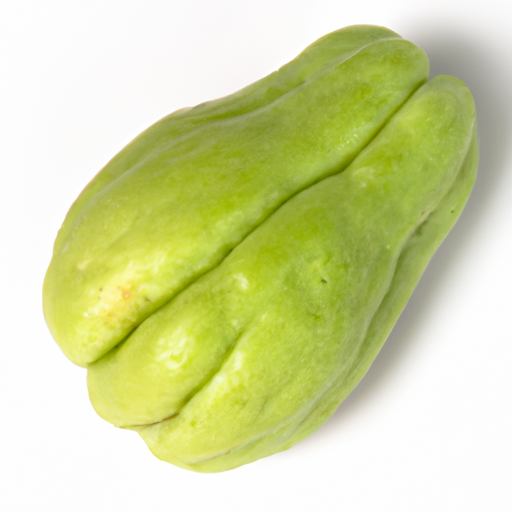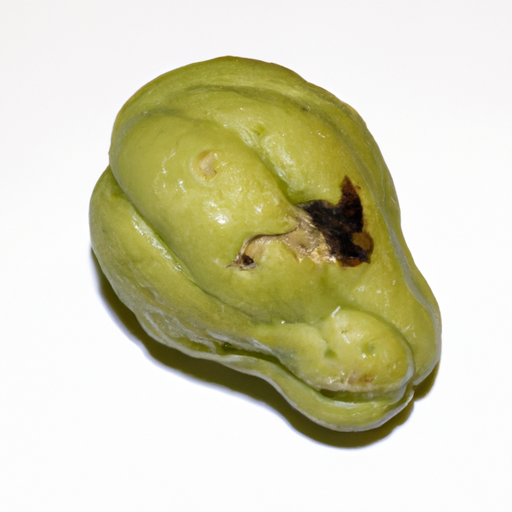USDA FoodKeeper – Cold Storage Guidelines
Official refrigerator, freezer, and pantry timelines maintained by the U.S. Department of Agriculture.
Visit USDA FoodKeeperWith its crisp texture and mild, slightly sweet flavor, this unique green fruit adds a delightful crunch to salads and stir-fries. Stored in the fridge, it can last for up to a month, giving you plenty of time to enjoy its refreshing taste, even after its peak freshness. Don't worry too much about expiration—it's still safe to savor up to ten days beyond that date!
30 most common foods with instant answers. Print it and stick it on your fridge—completely free! Want more? Upgrade to the complete guide with 70+ foods.
"According to USDA guidelines, fresh chayote should be stored in a plastic bag in the refrigerator at 40°F or below and used within 2 weeks for best quality."


Fridge
4°C (40°F)
Store in a crisper drawer
30 days
Shriveling, mold, dark spots
Use in stews, stir-fries, or raw
Zucchini, cucumber
Chayote does not have a specific expiration date like packaged goods, but it is best to use it within 1-2 weeks of purchase for optimal quality. When a chayote starts to shrivel, develop soft spots, or show signs of mold, it is past its prime and should be discarded. However, even if it looks fine, the texture and flavor may deteriorate over time, so using it sooner rather than later is recommended for the best taste and texture.
To determine if a chayote has gone bad, look for signs of browning, mold, or soft spots on the skin. A foul or fermented smell is a clear indication of spoilage. When touched, a mushy or slimy texture indicates that the chayote is no longer fresh and should be discarded.
Chayote is generally safe to consume, but like any fresh produce, proper handling and storage are important to prevent foodborne illness. It is advised to wash chayote thoroughly under running water before consuming or cooking to remove any dirt or bacteria that may be present on the surface. Additionally, it's important to store chayote away from raw meats and seafood to avoid cross-contamination.
To extend the shelf life of chayote, store it in a cool, dry place away from direct sunlight. You can also refrigerate chayote in a perforated plastic bag to maintain its freshness for a longer period. If you have cut chayote, wrap the unused portion tightly in plastic wrap or keep it in an airtight container in the refrigerator. Avoid freezing chayote as it can affect the texture and flavor when thawed.
Chayote, also known as mirliton or vegetable pear, is a member of the gourd family and is native to Mexico. It is a versatile ingredient used in various cuisines around the world, including Latin American, Caribbean, and Asian dishes. In some cultures, chayote is believed to have medicinal properties and is used to treat digestive issues and inflammation. The chayote fruit is pear-shaped with a mild, slightly sweet flavor that pairs well with savory dishes.
It's safe to store Chayote next to other fruits in the fridge as long as they are properly wrapped or in sealed containers to prevent cross-contamination. Avoid storing it next to strong-smelling fruits like onions, as Chayote can absorb odors.
Cooking Chayote can slightly extend its shelf life by a day or two if stored properly in the fridge after cooking. However, avoid leaving cooked Chayote at room temperature for more than 2 hours to prevent bacteria growth.
If Chayote has been left at room temperature for 24 hours, it's best to discard it to avoid the risk of foodborne illness. Bacteria can multiply rapidly at room temperature, compromising the safety of the food.
Chayote does not freeze well and can become mushy or watery when thawed. Freezing alters its cell structure, leading to a less desirable texture. It's best to consume Chayote fresh rather than attempting to freeze it.
Generally, different brands of Chayote have similar shelf lives when stored properly in the fridge. However, factors like the freshness of the produce at the time of purchase and storage conditions can impact shelf life more than the brand.
When transporting Chayote for a road trip, place it in a cooler with ice packs to maintain a safe temperature. Ensure the Chayote is well wrapped to prevent bruising and keep it away from raw meats or poultry to avoid cross-contamination.
Chayote tends to last longer in cooler temperatures, such as winter, due to slower ripening and reduced microbial activity. In summer, higher temperatures can accelerate spoilage, shortening its shelf life. Proper refrigeration is key regardless of the season.
Once Chayote is opened, it should be consumed within 2-3 days if stored in the fridge. Ensure it is wrapped tightly or stored in an airtight container to maintain freshness and prevent contamination.
30 most common foods with instant answers. Print it and stick it on your fridge—completely free! Want more? Upgrade to the complete guide with 70+ foods.
See Canidigest Digestibility Insights
Dig deeper into how Chayote behaves in your digestive system.
Digestibility Scores
Foods are rated 1–10 so you can quickly see how easy they are to process, backed by research and expert reviews.
Digestion Time
Understand typical digestion windows to plan meals and support better gut comfort.
Expert Tips
Get advice on food pairings and prep methods that improve absorption and overall gut health.
Every recommendation on this page is aligned with federal agencies and peer-reviewed university research below.
Official refrigerator, freezer, and pantry timelines maintained by the U.S. Department of Agriculture.
Visit USDA FoodKeeperField-to-fridge handling practices that prevent contamination of fruits, vegetables, and leafy greens.
Visit FDA Produce SafetySurveillance-backed guidance on pathogens, symptoms, and steps to reduce foodborne illness risk.
Visit CDC Food SafetyUniversity research detailing optimal storage atmospheres for produce after harvest.
Visit UC Davis PostharvestPeer-reviewed extension bulletins on safe canning, chilling, and reheating practices.
Visit Penn State ExtensionNeed deeper reading? Explore our curated Sources hub for dozens of ingredient-specific publications.
Scan your food directly and get instant safety info using our AI-powered camera feature.
We have recipes that can help you safely use chayote past its expiration date!
View Recipes →Grains & Pasta
View expiration date and storage guide →
Herbs and Fresh Produce
View expiration date and storage guide →
Meat & Poultry
View expiration date and storage guide →
Herbs and Fresh Produce
View expiration date and storage guide →
Dairy Products
View expiration date and storage guide →
Dairy Products
View expiration date and storage guide →
Seafood
View expiration date and storage guide →
Meat & Poultry
View expiration date and storage guide →
Dairy Products
View expiration date and storage guide →
Important: These are general guidelines based on authoritative sources listed above. Always use your best judgment and when in doubt, throw it out. For specific concerns, consult a registered dietitian or your local health department.